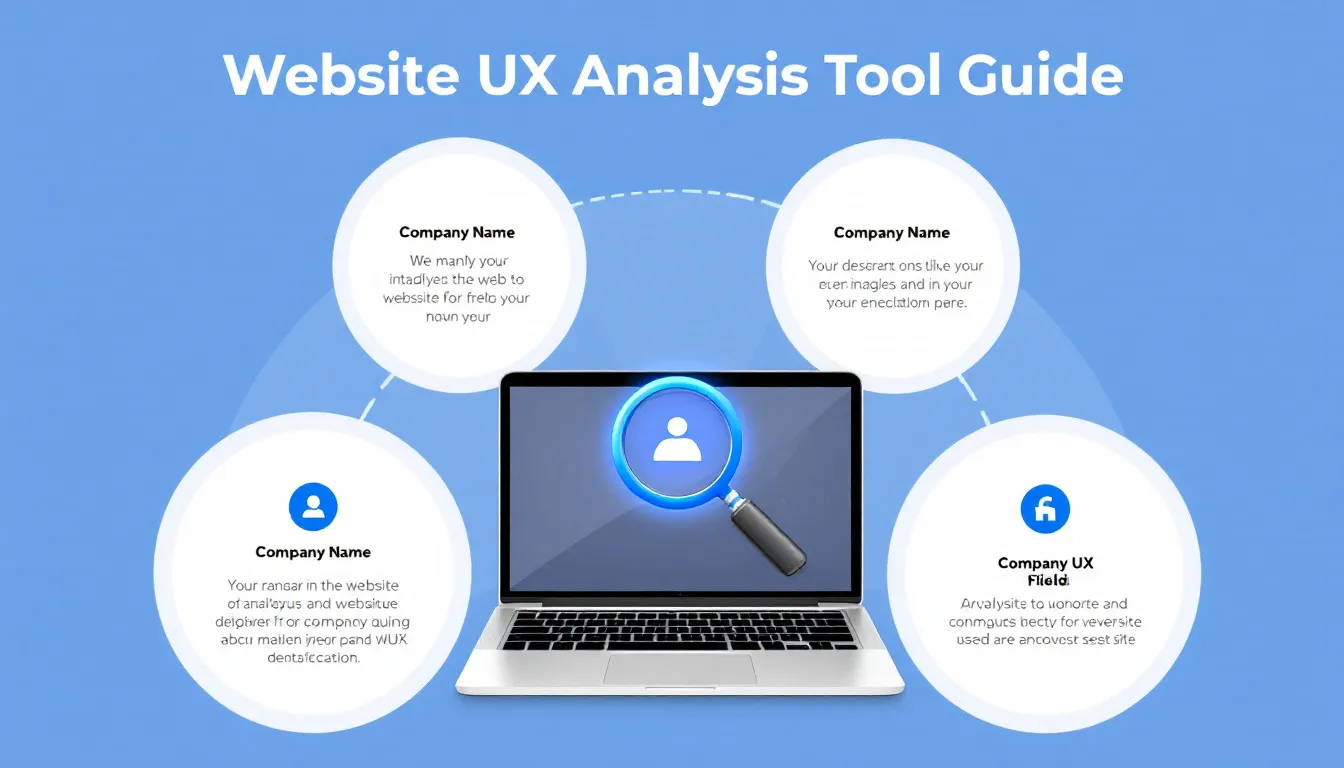Is this tool helpful?
How to Use the Website UX Competitor Analysis Tool Effectively
This tool helps you analyze competitor websites to identify opportunities for enhancing your online presence and website design. Use each field carefully to get precise, actionable analysis:
1. Company Name
Enter your company’s official name. This helps tailor the analysis to your brand. Examples you can use:
- BrightWave Digital Agency
- EcoSmart Home Products
2. Industry or Business Sector
Specify your primary industry to focus the competitive analysis on relevant players. For instance:
- Financial Technology (FinTech)
- Online Education Platforms
3. Competitor Websites
List websites of your top competitors, one URL per line. Include direct competitors to maximize insight. Sample inputs:
- www.smartfintechsolutions.com
- www.learnonlineacademy.org
- www.globaledtech.net
4. Products or Services
Describe your key products or services to allow precise comparisons. Examples:
- Mobile Banking Applications
- Interactive E-learning Modules
5. Target Audience
Optionally, describe your target market to focus insights on user experience relevant to your customers. Examples:
- Young professionals aged 25-35 interested in personal finance
- University students seeking flexible online courses
What the Website UX Competitor Analysis Tool Does and Why It Matters
The Website UX Competitor Analysis Tool evaluates how your competitors’ websites perform in usability, design, and engagement. It highlights areas where your site can improve, helping you stay competitive in a crowded online landscape.
Key benefits include:
- Competitive Intelligence: Understand your competitors’ strategies, user experience strengths, and weaknesses.
- Actionable Recommendations: Identify design and functionality areas to improve your site’s performance and visitor satisfaction.
- Improved User Engagement: Enhance navigation, content layout, and responsiveness based on industry benchmarks.
- Strategic Planning: Focus development resources on features that drive conversions and customer retention.
Practical Uses of the Website UX Competitor Analysis Tool
This tool serves multiple business needs across industries:
Example 1: SaaS Platform Website Review
A SaaS company, CloudSync, analyzed competitors to improve:
- Onboarding flows for new users
- Dashboard usability and customization
- Pricing page clarity and comparison features
Example 2: Nonprofit Organization Website Optimization
Green Future, an environmental nonprofit, used the tool to enhance:
- Donation form usability
- Event promotion and registration design
- Mobile browsing experience for better outreach
Core Elements Analyzed in Website User Experience
The tool focuses on key aspects that shape visitor interaction and satisfaction:
- Navigation Structure: How easy visitors find information
- Visual Design: Consistency, appeal, and branding
- Content Organization: Clarity and relevance of information presented
- Mobile Responsiveness: Website performance on smartphones and tablets
- Page Load Speed: Fast loading to reduce bounce rates
- Call-to-Action Placement: Effective buttons and links guiding user actions
Common Business Challenges Addressed
1. Improving Site Navigation
By reviewing competitor menu layouts and search features, you can restructure your site for intuitive user paths.
2. Boosting Conversion Rates
Analyze competitor tactics for clear calls-to-action, shorter forms, and trust-building elements to improve your own conversion funnels.
3. Enhancing Content Strategy
Learn how competitors organize and format content to keep visitors engaged, including the use of visuals and interactivity.
Frequently Asked Questions About Competitor Website Analysis
How many competitors should I analyze at once?
Analyze 3 to 5 direct competitors. This range provides a comprehensive view without overwhelming the process.
What website aspects matter most during analysis?
Focus on navigation, content structure, visual design, responsiveness, and conversion elements like buttons and forms.
How often should I perform competitor website analysis?
Perform a detailed review every 3 to 6 months, with ongoing monitoring for major changes monthly.
Is it useful to analyze international competitors?
Yes. International competitors can introduce new ideas and global best practices for your website UX.
Should I include indirect competitors in my analysis?
Include them if they demonstrate unique features or user experiences relevant to your business goals.
How do I prioritize the improvements suggested by the tool?
Prioritize changes that improve user experience and conversion rates, focusing on areas aligned with your business goals and resource availability.
Which metrics should I track after updates?
Track metrics such as:
- Average session duration
- Bounce rate
- Conversion rates
- Page load times
- Mobile versus desktop traffic ratio
How can I measure the success of website improvements?
Use A/B testing and collect user feedback to evaluate how changes affect visitor behavior and satisfaction.
Important Disclaimer
The calculations, results, and content provided by our tools are not guaranteed to be accurate, complete, or reliable. Users are responsible for verifying and interpreting the results. Our content and tools may contain errors, biases, or inconsistencies. Do not enter personal data, sensitive information, or personally identifiable information in our web forms or tools. Such data entry violates our terms of service and may result in unauthorized disclosure to third parties. We reserve the right to save inputs and outputs from our tools for the purposes of error debugging, bias identification, and performance improvement. External companies providing AI models used in our tools may also save and process data in accordance with their own policies. By using our tools, you consent to this data collection and processing. We reserve the right to limit the usage of our tools based on current usability factors.







